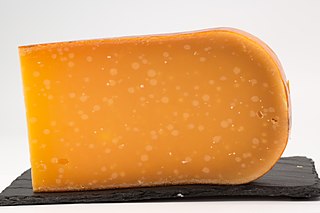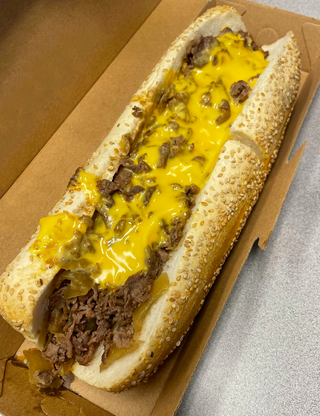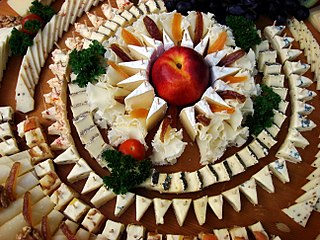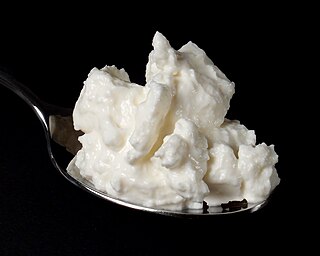Related Research Articles

Flax, also known as common flax or linseed, is a flowering plant, Linum usitatissimum, in the family Linaceae. It is cultivated as a food and fiber crop in regions of the world with temperate climates. Textiles made from flax are known in Western countries as linen and are traditionally used for bed sheets, underclothes, and table linen. Its oil is known as linseed oil. In addition to referring to the plant, the word "flax" may refer to the unspun fibers of the flax plant. The plant species is known only as a cultivated plant and appears to have been domesticated just once from the wild species Linum bienne, called pale flax. The plants called "flax" in New Zealand are, by contrast, members of the genus Phormium.

Beemster is a former municipality in the Netherlands, in the province of North Holland. The Beemster is the first so-called polder in the Netherlands that was reclaimed from a lake, the water being extracted from the lake by windmills. The Beemster polder was drained between 1609 and 1612. It has preserved intact its well-ordered landscape of fields, roads, canals, dykes and settlements, laid out in accordance with classical and Renaissance planning principles. A grid of canals parallels the grid of roads in the Beemster. The grids are offset: the larger feeder canals are offset by approximately one kilometer from the larger roads.

Purmerend is a city and municipality in the west of the Netherlands, in the province of North Holland and in the region of West Friesland. The city is surrounded by polders, such as the Purmer, Beemster and the Wormer. The city became the trade center of the region but the population grew relatively slowly. Only after 1960 did the population start to grow from around 10,000 to around 80,000 by the 2010s. From the 1960s onwards, Purmerend has seen major expansion and continues to do so. This expansion has turned Purmerend into a commuter town; many inhabitants of Purmerend work, go to school or spend their leisure time in Amsterdam. Purmerend is part of the Randstad, one of the largest conurbations in Europe.

Gouda is a sweet, creamy, yellow cow's milk cheese originating from the Netherlands. It is one of the most popular cheeses worldwide. The name is used today as a general term for numerous similar cheeses produced in the traditional Dutch manner.

Cottage cheese is a curdled milk product with a mild flavor and a creamy, non-homogeneous, soupy texture. It is made from skimmed milk by draining curds, but retaining some of the whey and keeping the curds loose. An important step in the manufacturing process distinguishing cottage cheese from other fresh cheeses is the adding of a "dressing" to the curd grains, usually cream, which is largely responsible for the taste of the product. Cottage cheese is not aged.

Kraft Dinner (KD) in Canada, Kraft Mac & Cheese in the United States, Australia, and New Zealand, Cheesey Pasta in the United Kingdom and internationally is a nonperishable, packaged macaroni and cheese product. It is made by Kraft Foods Group and traditionally cardboard-boxed with dried macaroni pasta and a packet of orange processed cheese powder. It was introduced under the Kraft Dinner name simultaneously in both Canada and the U.S. in 1937. The brand is popular with Canadians, who consume 55% more boxes per capita than Americans.

Annatto is an orange-red condiment and food coloring derived from the seeds of the achiote tree, native to tropical America. It is often used to impart a yellow or orange color to foods, but sometimes also for its flavor and aroma. Its scent is described as "slightly peppery with a hint of nutmeg" and flavor as "slightly nutty, sweet and peppery".

A cheesesteak is a sandwich made from thinly sliced pieces of beefsteak and melted cheese in a long hoagie roll. A popular regional fast food, it has its roots in the U.S. city of Philadelphia, Pennsylvania.

Dutch cuisine is formed from the cooking traditions and practices of the Netherlands. The country's cuisine is shaped by its location in the fertile North Sea river delta of the European Plain, giving rise to fishing, farming, and trading over sea, its former colonial empire and the spice trade.

Cheese is a dairy product produced in wide ranges of flavors, textures, and forms by coagulation of the milk protein casein. It comprises proteins and fat from milk. During production, milk is usually acidified and either the enzymes of rennet or bacterial enzymes with similar activity are added to cause the casein to coagulate. The solid curds are then separated from the liquid whey and pressed into finished cheese. Some cheeses have aromatic molds on the rind, the outer layer, or throughout.
Ronde van Noord-Holland is a road bicycle race held annually in the province of North Holland (Noord-Holland) in the Netherlands. In 2005 the race was organized as a 1.1 event on the UCI Europe Tour. From 2006 to 2018, it was rated as a 1.2 event.

A kaassoufflé is a Dutch snack of melted cheese inside a thin dough-based wrap which has been breaded and then deep-fried.

A croquette is a deep-fried roll consisting of a thick binder combined with a filling, which is breaded and deep-fried; it is served as a side dish, a snack, or fast food worldwide.

Beemster cheese is a hard, Dutch cow's milk cheese. Production of Beemster is similar to other hard cheeses such as Gouda. The specific taste of Beemster stems from the ingredients, that part of the production process is done by hand, and that the cheeses are ripened in changing conditions.

Kaasstengels, Kastengel or kue keju are a Dutch cheese snack in the shape of sticks. Owed to its colonial links to the Netherlands, kaasstengels are also commonly found in Indonesia. The name refers to its ingredients, shape and origin; kaas is the Dutch word for "cheese", while stengels means "sticks". Unlike most cookies, kaasstengels taste savoury and salty instead of sweet. In Indonesia kaasstengels, together with nastar and putri salju are the popular kue kering during festive occasion, such as Natal (Christmas) and Lebaran.

Quark or quarg is a type of fresh dairy product made from milk. The milk is soured, usually by adding lactic acid bacteria cultures, and strained once the desired curdling is achieved. It can be classified as fresh acid-set cheese. Traditional quark can be made without rennet, but in modern dairies small quantities of rennet are typically added. It is soft, white and unaged, and usually has no salt added. It is traditional in the cuisines of Baltic, Germanic and Slavic-speaking countries as well as amongst Ashkenazi Jews and various Turkic peoples.
The Beemster-class was a class of fourteen minesweepers that were built at different shipyards in the United States for the Royal Netherlands Navy (RNN). The minesweepers were based on the AMS-60 design and paid for by the United States under the Mutual Defense Assistance Program (MDAP). The minesweepers served in the RNN between 1953 and 1976.
References
- ↑ Mogannam, Sam; Gough, Dabney (18 October 2011). Bi-Rite Market's Eat Good Food: A Grocer's Guide to Shopping, Cooking & Creating Community Through Food [A Cookbook]. Clarkson Potter/Ten Speed. p. 244. ISBN 978-1-60774-071-1.